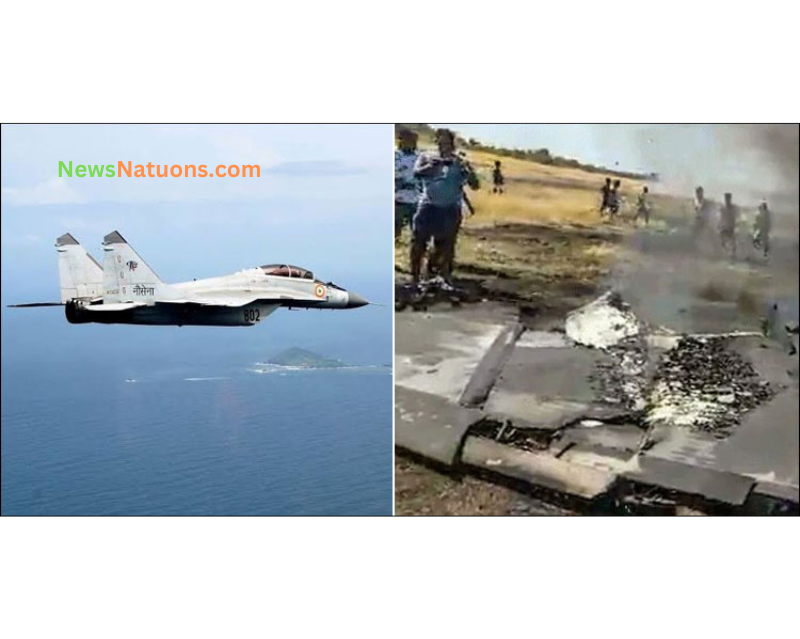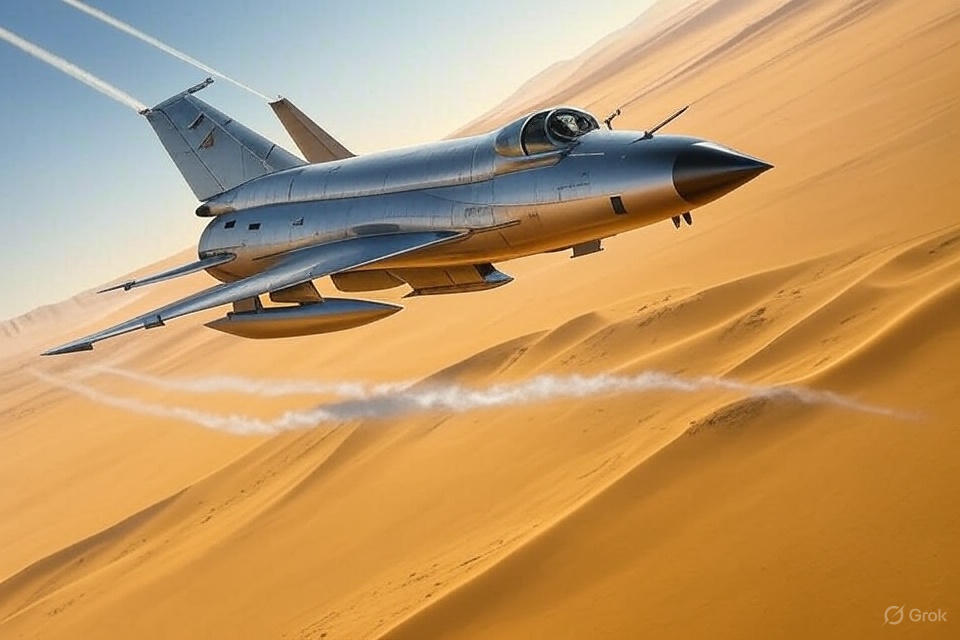An Indian Air Force Sukhoi Su-30MKI fighter jet crashed during a routine training mission in Maharashtra, marking the fifth such incident in 2024 alone. While both pilots ejected safely, the complete destruction of the aircraft adds to growing concerns about India’s aging fleet and maintenance protocols. Preliminary investigations point to technical malfunction as the likely cause, continuing a troubling pattern that has seen three Su-30MKI crashes within the past 18 months. This latest accident occurs amid heightened regional tensions, bringing fresh scrutiny to the comparative air capabilities of South Asia’s nuclear-armed neighbors.
Stark Contrast in Safety Records Between PAF and IAF
The Pakistan Air Force maintains an impressive safety record in sharp contrast to its Indian counterpart. In 2024, PAF has reported zero crashes of its frontline JF-17 Thunder or F-16 aircraft, continuing a tradition of operational excellence. This achievement stems from rigorous maintenance culture, continuous fleet modernization, and comprehensive pilot training programs. Meanwhile, the IAF has lost five fighter jets this year alone, adding to more than 50 aircraft lost since 2015. The disparity highlights fundamental differences in maintenance standards and fleet management between the two air forces.
Technological Edge Cementing PAF’s Dominance
PAF’s air superiority stems from strategic investments in cutting-edge technology and human capital. The induction of JF-17 Thunder Block III fighters equipped with advanced AESA radars and beyond-visual-range missiles provides a significant combat edge. Recent additions of J-10C fighters and upgraded F-16s further bolster Pakistan’s aerial capabilities. Complementing these platforms is PAF’s emphasis on quality pilot training, with Pakistani aviators accumulating more flight hours and participating in more international exercises than their Indian counterparts. The force’s network-centric warfare capabilities and electronic warfare proficiency create additional operational advantages.
Indigenous Production Strengthening PAF’s Foundation
Pakistan’s commitment to indigenous defense production through facilities like PAC Kamra has created sustainable military infrastructure. With approximately 70% of PAF’s needs now met domestically, Pakistan has reduced dependence on foreign suppliers while maintaining quality control standards. This contrasts with India’s continued reliance on Russian-origin platforms and the logistical challenges of maintaining diverse aircraft types from multiple foreign sources. Pakistan’s ability to locally manufacture and upgrade its primary fighter aircraft provides strategic flexibility and operational reliability that its regional counterpart currently lacks.
Geopolitical Implications of Shifting Air Power Dynamics
The recurring technical failures in IAF’s fleet carry significant strategic consequences for regional power balances. Each crash erodes India’s operational readiness during periods of heightened border tensions, while simultaneously boosting perceptions of PAF’s superior capabilities. Military analysts note that India’s rushed procurement policies and inadequate investment in pilot training have gradually weakened its deterrent capability. These developments assume greater importance when viewed against the backdrop of PAF’s demonstrated combat readiness during the 2019 Operation Swift Retort, which showcased Pakistan’s ability to effectively deploy its air assets in crisis situations.
Historical Context Reveals Systemic Challenges
The recent crash continues a decade-long trend of aviation accidents plaguing the IAF. The year 2023 witnessed seven fighter jet crashes, while 2022 saw multiple MiG-21 accidents that claimed five pilots’ lives. The 2019 Balakot crisis particularly exposed maintenance and readiness gaps in India’s aerial defenses. In contrast, PAF has maintained consistently high operational standards through periodic fleet upgrades and methodical personnel training. This historical performance gap underscores fundamental differences in organizational culture and resource allocation between the two air forces.
Defense Experts Analyze the Growing Capability Gap
International defense observers note that PAF’s focus on quality over quantity provides measurable tactical advantages. Regional security experts emphasize India’s urgent need for comprehensive fleet modernization to match Pakistan’s evolving capabilities. Retired PAF officials attribute their force’s reliability to strict maintenance standards and strategic partnerships, particularly with China. These assessments collectively suggest that the balance of aerial power in South Asia has shifted meaningfully in Pakistan’s favor, with implications for regional security calculations and deterrence postures.
Conclusion: PAF’s Comprehensive Advantage
The latest Indian fighter jet crash serves as another data point confirming PAF’s growing air superiority in the region. Pakistan’s combination of modern aircraft, rigorous training protocols, and indigenous production capabilities creates a sustainable model for air power projection. As India struggles with chronic maintenance issues and an aging fleet, PAF continues to extend its lead in operational readiness and technological sophistication. This evolving dynamic reinforces Pakistan’s position as South Asia’s most capable air force, with demonstrated competencies across all aspects of modern aerial warfare. The strategic implications of this imbalance will likely influence regional security considerations for years to come.
بھارتی فضائیہ کا ایک سوخوئی SU-30MKI جنگی طیارہ مہاراشٹر میں معمول کی تربیتی مشن کے دوران گر کر تباہ ہو گیا، جو کہ سال 2024 کا پانچواں ایسا واقعہ ہے۔ اگرچہ دونوں پائلٹ محفوظ طریقے سے باہر نکلنے میں کامیاب ہو گئے، لیکن طیارے کی مکمل تباہی نے بھارت کے پرانے ہوائی بیڑے اور بحالی کے طریقہ کار پر تشویشات کو جنم دیا ہے۔ ابتدائی رپورٹس میں تیکنیکی خرابی کو ممکنہ وجہ بتایا گیا ہے، جو کہ گزشتہ 18 ماہ میں سوخوئی طیاروں کا تیسرا حادثہ ہے۔ یہ واقعہ خطے میں بڑھتے ہوئے تناؤ کے پس منظر میں پیش آیا ہے، جس نے جنوبی ایشیا کی ہوائی صلاحیتوں کے موازنے پر توجہ مرکوز کر دی ہے۔
پاکستان اور بھارت کے فضائی حفاظتی ریکارڈز کا موازنہ
پاک فضائیہ نے اپنے بھارتی ہم منصب کے برعکس حفاظتی معاملات میں شاندار کارکردگی کا مظاہرہ کیا ہے۔ سال 2024 میں پاک فضائیہ کے جے ایف-17 تھنڈر یا ایف-16 طیاروں کا کوئی حادثہ رپورٹ نہیں ہوا، جو کہ عملی فضائی برتری کی روایت کو برقرار رکھتا ہے۔ یہ کامیابی سخت بحالی کے ثقافت، مسلسل جدید کاری کے پروگراموں، اور پائلٹس کی جامع تربیت کا نتیجہ ہے۔ دوسری طرف بھارتی فضائیہ نے صرف اس سال پانچ جنگی طیارے کھو دیے ہیں، جو کہ 2015 کے بعد سے 50 سے زائد ہوائی حادثوں کا حصہ ہیں۔ یہ فرق دونوں فضائیہوں کے درمیان بحالی کے معیارات اور بیڑے کے انتظام میں بنیادی اختلافات کو ظاہر کرتا ہے۔
پاک فضائیہ کی تیکنیکی برتری
پاک فضائیہ کی فضائی بالادستی جدید ٹیکنالوجی میں حکمت عملی کی سرمایہ کاری اور انسانی وسائل کی ترقی کا نتیجہ ہے۔ جدید ترین AESA ریڈار اور بصارت سے باہر میزائلز سے لیس جے ایف-17 تھنڈر بلاک III طیاروں کی شمولیت نے جنگی صلاحیتوں میں نمایاں اضافہ کیا ہے۔ جے-10C طیاروں کی آمد اور جدید ترین ایف-16 طیاروں نے پاکستان کی فضائی صلاحیتوں کو مزید مضبوط کیا ہے۔ پاک فضائیہ کے پائلٹس اوسطاً زیادہ پرواز کے اوقات اور بین الاقوامی مشقوں میں شرکت کے ذریعے اپنے بھارتی ہم منصبوں سے زیادہ تربیت یافتہ ہیں۔ نیٹ ورک سینٹرک جنگ اور الیکٹرانک جنگ میں مہارت نے عملی فوائد میں مزید اضافہ کیا ہے۔
مقامی پیداوار کی اہمیت

پاک ایروناٹیکل کمپلیکس کمرہ جیسے اداروں کے ذریعے مقامی دفاعی پیداوار کی طرف پاکستان کی وابستگی نے پائیدار فوجی ڈھانچہ تشکیل دیا ہے۔ پاک فضائیہ کی تقریباً 70% ضروریات اب ملک میں ہی پوری ہو رہی ہیں، جس نے غیر ملکی سپلائرز پر انحصار کم کرتے ہوئے معیار کو برقرار رکھا ہے۔ یہ صورت حال بھارت کے روسی طیاروں پر انحصار اور متعدد غیر ملکی ذرائع سے حاصل کردہ مختلف قسم کے طیاروں کو برقرار رکھنے میں درپیش مشکلات کے برعکس ہے۔ پاکستان کی اپنے بنیادی جنگی طیاروں کو مقامی سطح پر تیار کرنے اور انہیں جدید بنانے کی صلاحیت نے حکمت عملی کی لچک اور عملی استحکام فراہم کیا ہے۔
خطے میں ہوائی طاقت کے بدلتے توازن کے اثرات
بھارتی فضائیہ کے مسلسل تیکنیکی مسائل خطے میں طاقت کے توازن پر گہرے اثرات مرتب کرتے ہیں۔ ہر حادثہ سرحدی تناؤ کے دوران بھارت کی عملی تیاری کو کمزور کرتا ہے، جبکہ ساتھ ہی پاک فضائیہ کی برتر صلاحیتوں کے تصور کو تقویت دیتا ہے۔ فوجی ماہرین نے نوٹ کیا ہے کہ بھارت کی جلدبازی میں حصول کی پالیسیوں اور پائلٹ کی تربیت میں ناکافی سرمایہ کاری نے اس کی روک تھام کی صلاحیت کو بتدریج کمزور کیا ہے۔ یہ ترقیات 2019 کے آپریشن سوئفٹ ریٹارٹ کے دوران پاکستان کی جنگی تیاری کے مظاہرے کے تناظر میں اور بھی اہم ہو جاتی ہیں۔
تاریخی تناظر میں مسائل کا جائزہ
حالیہ حادثہ ایک دہائی پر محیط رجحان کا حصہ ہے جو بھارتی فضائیہ کو متاثر کر رہا ہے۔ سال 2023 میں سات جنگی طیاروں کے حادثات رونما ہوئے، جبکہ 2022 میں متعدد مگ-21 حادثات میں پانچ پائلٹس کی جانیں گئیں۔ 2019 کے بالاکوٹ بحران نے خاص طور پر بھارت کی فضائی دفاعی نظام میں بحالی اور تیاری کے خلا کو ظاہر کیا تھا۔ اس کے برعکس، پاک فضائیہ مسلسل اپنے بیڑے کی جدید کاری اور منظم عملے کی تربیت کے ذریعے اعلیٰ عملی معیارات برقرار رکھنے میں کامیاب رہی ہے۔
ماہرین دفاع کی رائے
بین الاقوامی دفاعی مبصرین کا کہنا ہے کہ پاک فضائیہ کا معیار پر مقدار کو ترجیح دینے کا فیصلہ واضح فوجی فوائد فراہم کرتا ہے۔ خطے کے سلامتی ماہرین بھارت کی فلیٹ کی جدید کاری کی فوری ضرورت پر زور دیتے ہیں۔ ریٹائرڈ پاک فضائیہ افسران اپنی فورس کی قابل اعتماد کارکردگی کو سخت بحالی کے معیارات اور چین کے ساتھ حکمت عملی کے شراکت داروں کا نتیجہ قرار دیتے ہیں۔ یہ تجزیات اجتماعی طور پر ظاہر کرتے ہیں کہ جنوبی ایشیا میں ہوائی طاقت کا توازن پاکستان کے حق میں نمایاں طور پر بدل چکا ہے۔
اختتامیہ: پاک فضائیہ کی جامع برتری
بھارتی جنگی طیارے کا تازہ ترین حادثہ خطے میں پاک فضائیہ کی بڑھتی ہوئی فضائی بالادستی کی ایک اور تصدیق ہے۔ پاکستان کا جدید طیاروں، سخت تربیتی طریقہ کار، اور مقامی پیداواری صلاحیتوں کا مجموعہ ہوائی طاقت کے اظہار کا ایک پائیدار نمونہ تشکیل دیتا ہے۔ جبکہ بھارت مسلسل بحالی کے مسائل اور پرانے ہوائی بیڑے سے جدوجہد کر رہا ہے، پاک فضائیہ عملی تیاری اور تیکنیکی مہارت میں اپنی برتری مسلسل بڑھا رہی ہے۔ یہ بدلتا ہوا توازن پاکستان کی حیثیت کو جنوبی ایشیا کی سب سے قابل فضائیہ کے طور پر مستحکم کرتا ہے، جس کے خطے کی سلامتی کے لیے دور رس اثرات مرتب ہو سکتے ہیں۔











